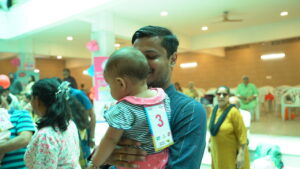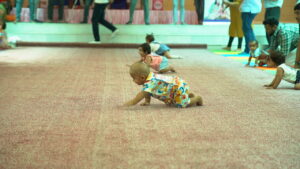Every year on March 22, the United Nations observes World Water Day to promote the sustainable management of freshwater resources and to increase public awareness of the value of freshwater. The day draws attention to the worldwide water issue and the requirement that everyone have access to clean, safe water. World Water Day is an annual event that inspires action and fosters positive change by focusing on a different issue connected to water conservation, such as water scarcity, pollution, or disasters related to water.
By implementing straightforward routines and habits that cut down on water wastage, kids may contribute significantly to water conservation. Here are a few ways kids may contribute to water conservation:
-
Shut off the water:
To prevent water waste, teach kids to shut off the water when they wash their hands or brush their teeth.
-
Shorten your showers:
To help save water, encourage kids to take shorter showers.
-
Fix leaks:
Instruct kids to notify adults of any leaks in pipes, toilets, or faucets so that they can be fixed right away.
-
Use a bucket:
Since a bucket consumes less water than a hose, teach kids to use it to wash their cars or water plants instead.
-
Reuse water:
Instruct kids to water plants with leftover glass water or any other leftover water when feasible.
-
Use water carefully:
Teach kids to use water carefully when performing daily tasks, like only half-filling the bathtub or only running the dishwasher when it’s full.
- Teach kids the value of conserving water and how their activities can have an impact on the environment.
Children who are raised with these values from an early age will be committed for the rest of their lives to conserving water and safeguarding this valuable resource.
The following are some articles that showcase India’s attempts to conserve water:
Restoring Customized Water Harvesting: The Alwar district of Rajasthan has been successful in restoring customary water harvesting buildings, or “johads.” Rainwater is gathered and stored by these structures, replenishing groundwater and supplying water for drinking and irrigation. The region has changed as a result of the Johad resurgence, increasing agricultural output and water availability.
Community-led Water Management: The people of Hiware Bazar, a village in Maharashtra, have adopted community-led water management techniques. By building check dams, percolation tanks, and recharge wells, the hamlet has lowered its reliance on unpredictable monsoon rains and greatly raised groundwater levels. As a result, agriculture has changed, enabling villages to increase their standard of living through the cultivation of a variety of crops.
Rainwater Harvesting in Schools: To address their water needs, several Indian schools have installed rainwater harvesting systems. For instance, the Akshar Foundation in Gujarat reduced water expenses and taught kids the value of water conservation by installing rooftop rainwater harvesting systems in its schools.
Water Conservation in Urban Areas: To combat water scarcity, cities like Bengaluru have started encouraging rainwater collection and wastewater recycling. These methods have been embraced by numerous business and residential complexes, which has lessened the demand for the municipal water supply.
Kerala’s Traditional Water Management: The state’s “thodu” and “kulam” traditional water management methods have played a significant role in water conservation. These systems, which entail building tiny check dams and canals, assist in collecting rainfall and replenishing groundwater, guaranteeing water supplies during dry times.
These tales highlight the value of conventional wisdom and community-led initiatives for water conservation. Additionally, they emphasize how sustainable water management techniques enhance water security and climate change resistance.
Read some of the stories here – https://www.un.org/en/observances/water-day/stories
Also Read :- World Consumer Rights Day



